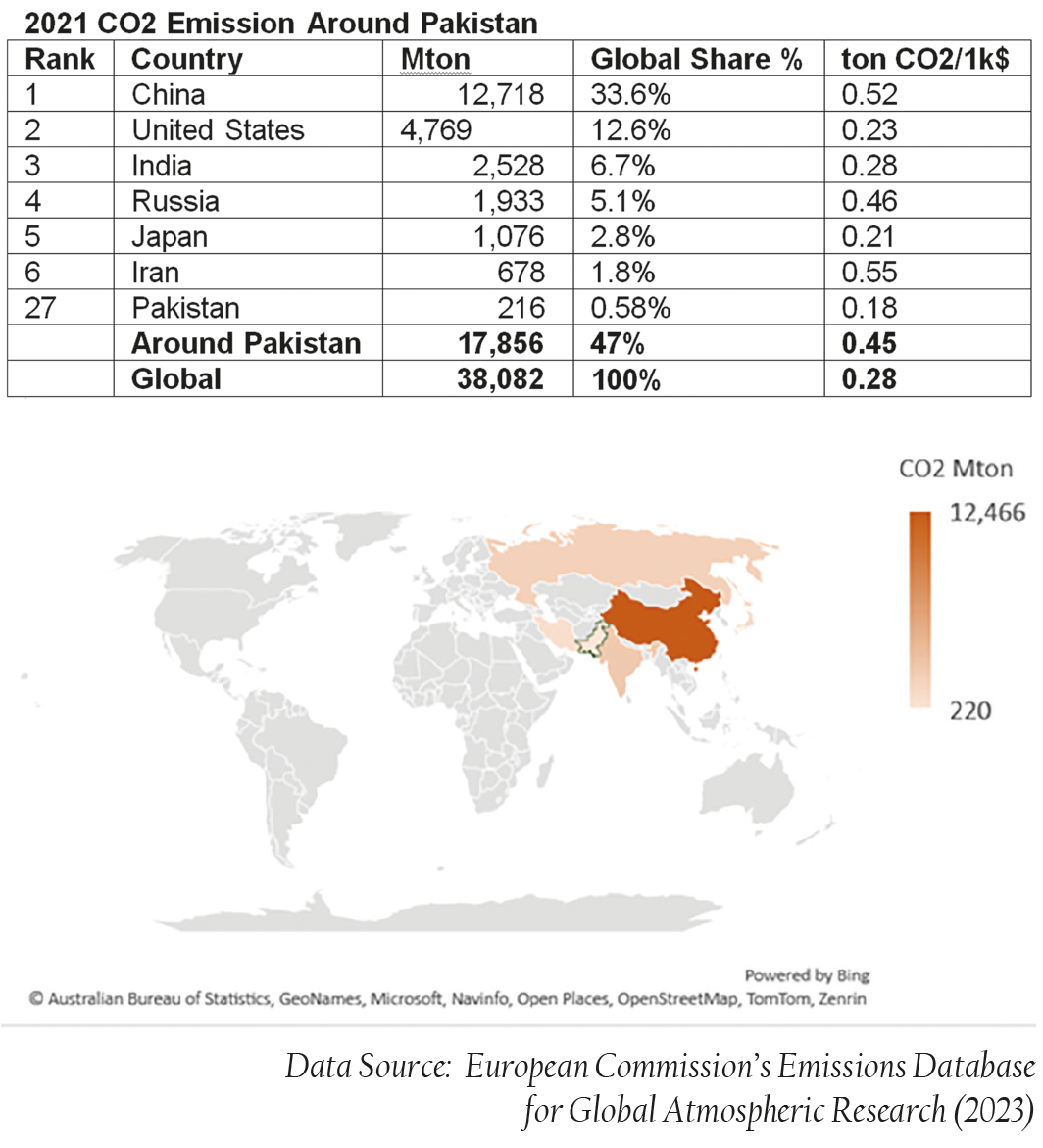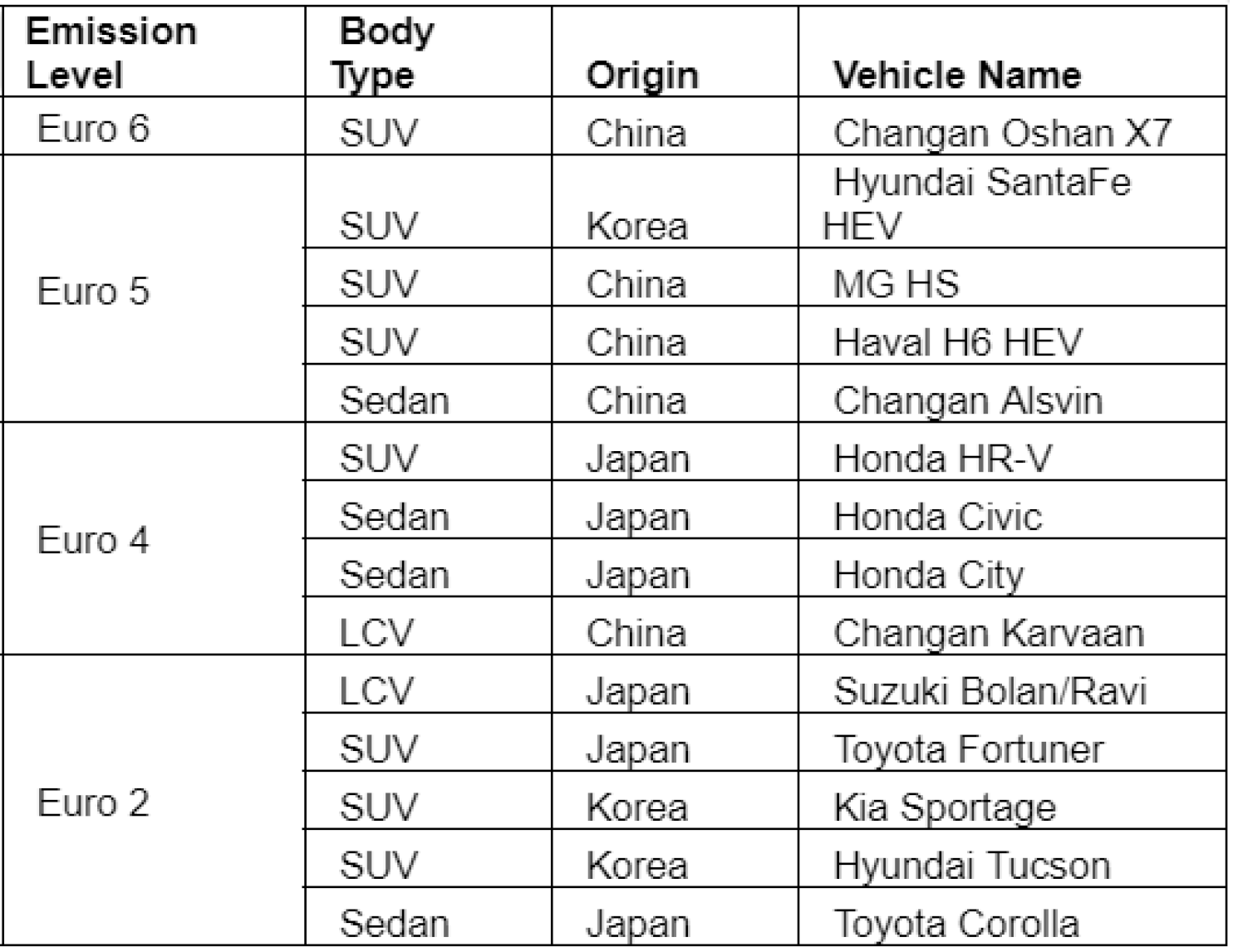In the intricate world of climate challenges, Pakistan faces a critical question: can the nation sustain an influx of 350,000 new cars every five years, especially when it stands as the eighth most vulnerable country to global warming? This question was asked by one of the readers of my opinion piece last week. Here is my take on the issue.
A climate reality
Let’s start with a clear perspective: in the global climate narrative, Pakistan is more the victim than a perpetrator. The country contributes only 0.58% to global carbon emissions; yet it is surrounded by five top carbon (CO2) emitting countries that collectively contribute to 50% of the world’s total carbon emissions. Keep in mind that 91% of global CO2 emission is a result of large scale economic activities, mainly power generation, industrial combustion or transportation, in other words, to contribute to the GDP of respective countries.
The table below shows which country is dumping how many million tons of CO2 to add $1,000 in their GDPs. It shows that 47% of global CO2 is emitted by five countries – within our very neighborhood. Against the global emission of 0.28 ton CO2/$1k, these countries are dumping a staggering 0.45 ton of CO2/$1k. Pakistan is the clear victim in the region, producing a paltry 0.18 ton of CO2 / $1k.

Crunching the carbon numbers
Our global standing notwithstanding, Pakistan’s carbon footprint is still growing. From 110 million million tons in 2000 to 216 million million tons in 2021 (a 3.3% compounded annual growth rate), Pakistan’s CO2 emissions are anticipated to reach 253 million million tons by 2030.
Now, let’s delve into the numbers. According to the Statista Mobility Market Outlook report of January 2022, a typical B-segment passenger car (for example, Toyota Yaris or Suzuki Swift) releases around 1,470 kg of CO2/15,000km. Considering the usual mileage of 24,000km in Pakistan, the carbon impact is calculated at 2,352kg/year.
The potential impact of 350,000 new cars hitting the roads every five years equals 0.823 million tons of CO2. This contributes 0.3% to the national carbon footprint.
Neutralizing the carbon footprint
So, what can be done about this? The US Department of Agriculture reported in 2015 that a mature tree absorbs 22kg of CO2 annually. So the nation requires 108 mature trees to neutralize the carbon footprint of one car. The quantum of 350,000 cars would require a massive plantation drive to plant 37.7 million trees.
This is not very far fetched. As we talk about large scale forestation drives, the spotlight turns to government initiatives like the Billion Tree Tsunami started in 2014. The first phase of planting 1 billion trees was completed with over 35,000 hectares of land in KPK in July 2018 at a cost of Rs 21 billion.
The project was expanded into Ten Billion Tree Tsunami, a four year project scheduled to complete in 2023 with a total budget of Rs 125 billion. It was started in 2019, however as per the latest update on the website of the Ministry of Climate Change, there was a massive budget cut of 78% in fiscal year 2021. Hence, uncertainties linger, introducing a dimension of unpredictability in the environmental narrative.
Still, even if the government initiative is in doldrums, I propose a shared responsibility. The cost of planting 108 trees per car is not more than Rs 50,000 per vehicle. Pakistan Automotive Manufactuerer’s Association (PAMA) should step forward towards an industry-wide initiative to plant trees, engaging all vehicle manufacturers who have been in the industry for the past four decades.
Euro emission standards: a path to cleaner air
Another way of thinking about reducing our carbon footprint is to consider the cars currently on the road and whether they meet European emission standards. Euro 5 or 6 petrol cars emerge as the environmentally conscious choices, as they are 45% cleaner than their Euro 2 counterparts.
Consider the list below. Only one vehicle in Pakistan comes with a Euro 6 engine, and it is of Chinese origin. Other Euro 5 engines are also of Chinese origin. Only one Korean model comes with a Euro 5 engine, the remaining Korean and Japanese models are Euro 4 or Euro 2.
As cleaner fuel is now widely available in the country there is no excuse for auto manufacturers to resist emission regulations. It’s high time the government should take a structured approach to phase out any vehicle below Euro 4 emission standard.

In conclusion
As we think about climate changes, adding 350,000 cars every five years in Pakistan might seem like a small thing compared to the big pollution from neighboring countries. To consider: making more cars to meet demand might cause some environmental problems, but it also creates new jobs and helps the economy grow – especially when over 45% of car prices goes directly to the national exchequer. It is a careful balancing act between taking care of the environment and growing the economy
























Dear Mr. Syed Shabbir Uddin,
Impressive and knowledgeable article on the CO2 emissions and Global Warming in Pakistan. In the article you mentioned 5 neighboring countries appear responsible for polluting carbon emissions in Pakistan but you did not mention names of those countries. As per my knowledge the 5 neighboring countries could be India, China, Nepal, Afghanistan and Iran. We know Iran, Nepal and Afghanistan are not industrialized nation but India and China. Both countries heavy industries are not next to our (Pakistan) border that can pollute our environment. All their heavy industries are in their eastern region are far from Pakistan borders. However, you mentioned about Europe and North America. They are also far from Pakistan. But they accept their role and responsibilities for global warming and working on this vulnerable issue. I think before bringing 350,000 cars in every 5 years we have to take some concrete steps. We have to improve our roads/streets/highways conditions and to build endure infrastructure like all those rich nations. With Best wishes
Nice posting….carry on Sir.